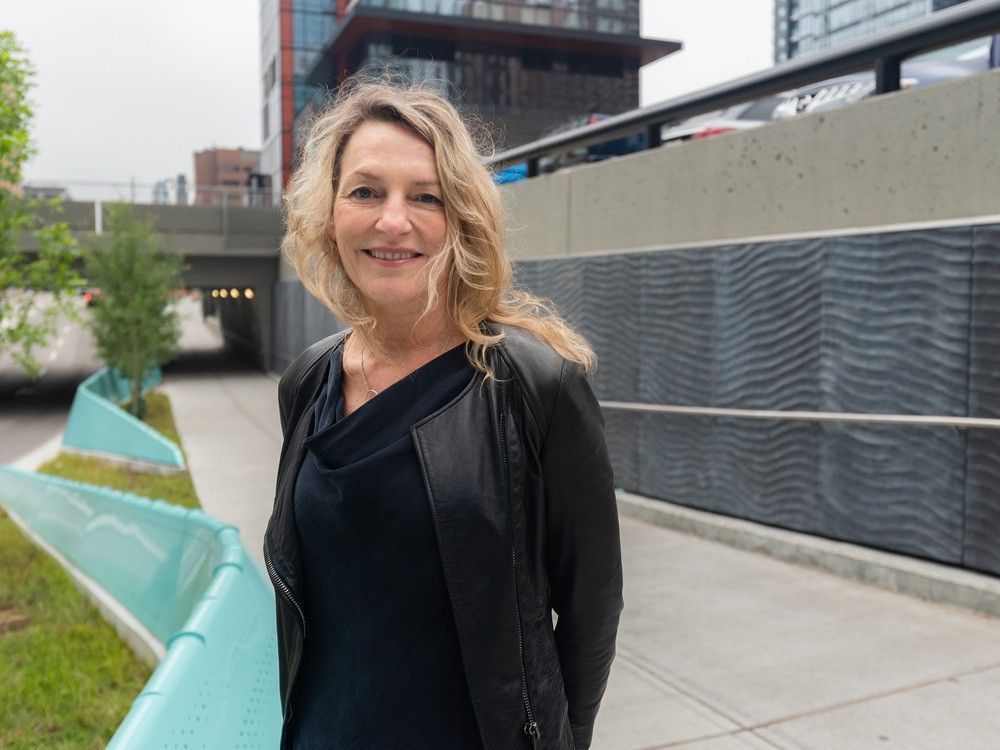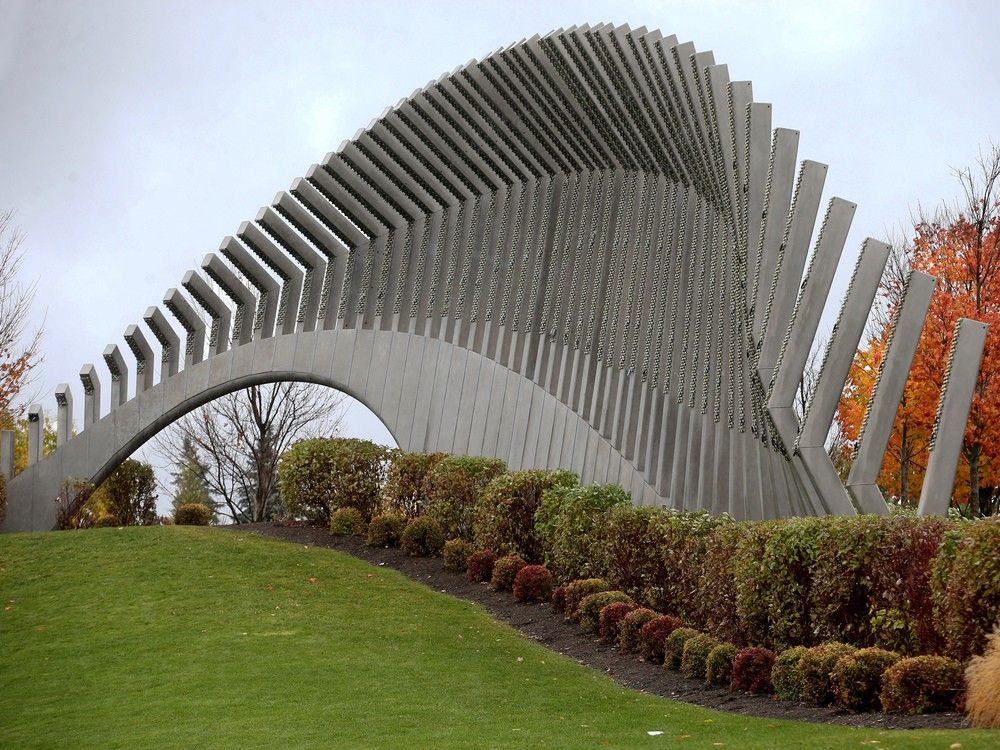The final
Lansdowne 2.0
report has recommended that a massive digital art piece be “respectfully decommissioned and removed” after only 11 years.
Moving Surfaces is 10 metres by 50 metres of undulating folded stainless steel with an LED lighting system that activates at night. But it has been non-functional as a digital art piece since March 2024 because some parts are no longer available and there’s no budget to restore the piece, the report said.
Moving Surfaces’ Vancouver-based creator, Jill Anholt, is asking city councillors to reconsider and says she and her team would like to come up with a cost-effective solution.
If Moving Surfaces is decommissioned, it will represent “almost $2 million of stainless steel to be sold for scrap,” she said.
“It would be fiscally and culturally irresponsible to dismantle and discard the work. Not to mention a huge waste of taxpayer dollars.”
In the past 10 years, the city has frequently had cases of LED strings not lighting up and has had to repair these by replacing the LED power supplies. Moving Surfaces has served as a “meaningful element within the public realm,” but it has required maintenance over the years. It would take $700,000 to rehabilitate the lighting system, according to the report.
“It is estimated that it has cost $5,000 annually since 2017 to maintain, replace and solve electrical issues. In 2019, due to a major lighting and software failure, a repair was required to make the Moving Surfaces functional. The cost to refurbish was $119,000.”
The installation is a “unique civic asset” and one of the largest public art projects in Canada, Anholt said.
When it was first activated, Moving Surfaces showed images created by Anholt based on a journey along the Rideau Canal. But one of the installation’s most innovative features is its ability to show dynamic digital art by artists from around the world, Anholt said. To her knowledge, the work of only one other digital artist besides herself has been showcased on Moving Surfaces.
“This is a complex piece that was never fully realized.”
Anholt considers $5,000 a year to be a modest annual maintenance fee for a light-based large scale public artwork operating continuously in the open air. All public art using advanced lighting systems needs maintenance, she said.
“I suspect that the LED screens in the stadium and their proposed arena will have maintenance budgets that far exceed this amount,” she told city councillors.
Anholt designed and installed Moving Surfaces on Lansdowne’s berm and the trickling spire Uplift in its water plaza in 2014 for a combined cost of about $4 million. Only three years later,
Moving Surfaces was temporarily removed
to allow additional temporary seating for the Canadian Football League’s Grey Cup championship game. It was reinstalled in 2018, but Anholt said she was not consulted, and she believed it suffered permanent damage.
“The piece was the largest I have ever created,” she said. “It’s designed specifically for that place, for that berm. My work is very site-specific. My pieces can’t be picked up and moved.”
Anholt said she was devastated when she heard heard that the report recommended decommissioning Moving Surfaces. She has produced public art for 25 years and none of her works has ever been decommissioned. Moving Surfaces was the first time she used a complex LED system, but all lighting systems need to evolve, she said.
The last two LED power supplies for Moving Surfaces were installed in January 2024 and there was no remaining stock, the report said. The lighting hasn’t worked since March 2024 because of the complexity of the electrical components and because parts are no longer available. Moving Surfaces “has reached the end of its service life.”
Anholt said she had repeatedly offered to collaborate with her own lighting designers to produce an economical and creative refurbishment proposal, but those offers had been declined. An external vendor estimated a replacement cost of $700,000, but Anholt said she was not given the opportunity to review, question or refine it while the lighting was non-operational.
“I work on lighting projects all over the world,” she said. “I have a great team of different lighting designers. I would like to speak with and come up with a proposal. I can’t tell you what the cost is because I’ve never been given this opportunity to actually engage with this.”

Anholt may get an opportunity, though. City council is to decide on Lansdowne 2.0 plans on Nov. 7. After the finance and corporate services committee
heard from dozens of delegations
, councillors presented a series of motions.
Capital ward Coun. Shawn Menard, who has opposed Lansdowne 2.0, presented a motion that city staff collaborate with Anholt and an external digital media consultant on an assessment to find a durable and cost-effective way to reimagine and reinstate Moving Surfaces. The motion proposes a limit of $25,000.
“I know a lot of people love Moving Surfaces when it’s displaying those lights,” Menard said.
The Lansdowne 2.0 report says the city recognized the piece’s artistic value and its contribution to the site and had committed $2 million in public art investment in the Lansdowne 2.0 budget for new artworks to “reflect the evolving character of the site and its surrounding community.”
If even a quarter of the new art budget was directed towards restoring and maintaining Moving Surfaces’ dynamic lighting system, it would continue to animate Lansdowne Park for decades, Anholt said.
“They’re going to take down a piece that is stainless steel, beautifully fabricated, and replace it when they can refurbish it. It’s really shocking.”
Our website is your destination for up-to-the-minute news, so make sure to bookmark our homepage and sign up for our newsletters so we can keep you informed.
Related
- Lansdowne 2.0 approved following sharply divided marathon meeting
- Canadian military wants mobilization plan in place to boost reserves to 400,000 personnel



